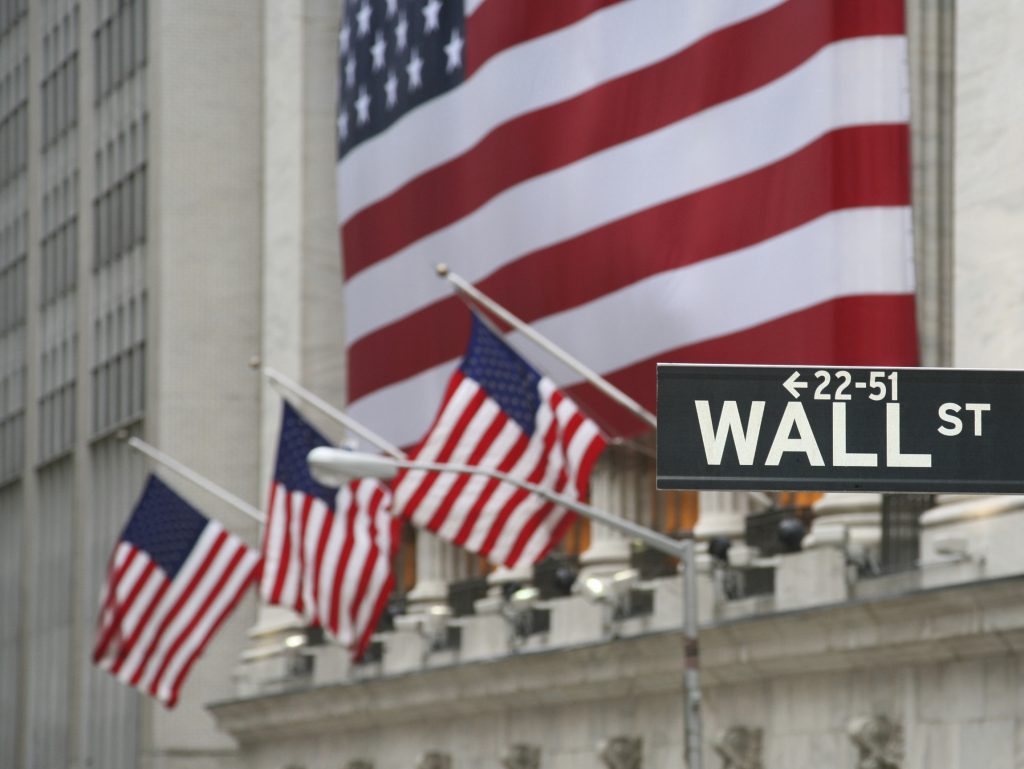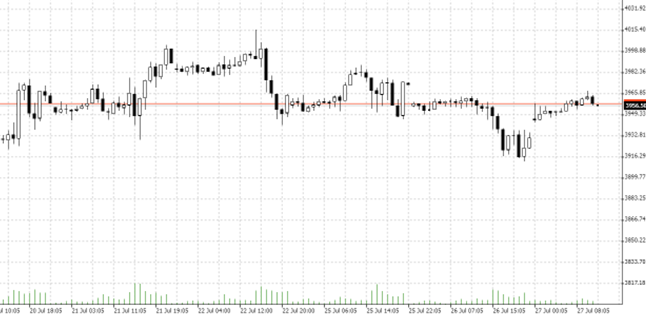

27.07.2022 – The Federal Reserve is already moving prices again – by the time you read these lines, the hubbub has probably already broken out. As always, our advice is: Don’t trade around the Fed. Because the monetary guardians are rarely unambiguous. Both currency and stock markets will probably swing wildly back and forth for a while until the herd decides on a direction.
raders are lurking and waiting – you can see this very nicely in the hourly chart of the S&P 500 at noon German time on Wednesday. Shortly, the picture will have changed violently into a wild up and down.

Source: Bernstein Bank GmbH
These are the crucial questions: how high will the Fed raise interest rates? How much will it follow through with quantitative tightening? Will the central bank adjust its course because of a looming recession? It is not just the press release that is important, but above all the press conference: Fed Chairman Jerome Powell tends to wrap previously strong statements in absorbent cotton and tone them down. But who knows – maybe a clear positioning will slip out. And then there are the analysts’ reactions to the oracle’s statement.
High to 3.75 percent
You should compare the current news with the previously expressed expectations: This Wednesday, it’s expected to move up 75 basis points to 2.25 to 2.5 percent. A higher move is likely to push stocks lower; a lower rate hike is likely to lift prices higher. Expectations for the September meeting are: Interest rate step of 50 basis points; for November and December, the market expects another 25 basis points each. This would put the interest rate at 3.25 to 3.5 percent at the end of the year. According to current estimates by most analysts, the peak will be reached in February at 3.5 to 3.75 percent.
Question about new interest rate cuts
And new rate cuts are expected to begin in the first quarter of 2023. Or will this turnaround happen sooner after all? Let’s let the pros with their crystal balls have their say: Michael Harnett of Bank of America sees the “pivot” as early as November. Super-bear Michael Wilson of Morgan Stanley, on the other hand, just wrote that it would be premature to expect the Fed to stop tightening, even if there is speculation about a recession. The S&P 500 could therefore still slip to around 3,000 points.
Nothing is known for sure
Presumably, the Fed will point primarily to inflation for further action. And to the strength of the economy, especially the labor market. How clear this outlook is will set the course for the market. However, there’s one problem that doesn’t make things any easier: Nick Timiraos of the “Wall Street Journal” is considered an unofficial Fed spokesman. And the journalist just wrote that the Fed could do away with forward guidance without further ado. More confusion, then. We hope you are correct in the fog that lies over the market. Bernstein Bank wished you successful trades and investments!
Important Notes on This Publication:
The content of this publication is for general information purposes only. In this context, it is neither an individual investment recommendation or advice nor an offer to purchase or sell securities or other financial products. The content in question and all the information contained therein do not in any way replace individual investor- or investment-oriented advice. No reliable forecast or indication for the future is possible with respect to any presentation or information on the present or past performance of the relevant underlying assets. All information and data presented in this publication are based on reliable sources. However, Bernstein Bank does not guarantee that the information and data contained in this publication is up-to-date, correct and complete. Securities traded on the financial markets are subject to price fluctuations. A contract for difference (CFD) is also a financial instrument with leverage effect. Against this backdrop, CFD trading involves a high risk up to the point of total loss and may not be suitable for all investors. Therefore, make sure that you have fully understood all the correlating risks. If necessary, ask for independent advice. CFDs are complex instruments and are associated with the high risk of losing money quickly because of the leverage effect. 68% of retail investor accounts lose money trading CFD with this provider. You should consider whether you understand how CFD work and whether you can afford to take the high risk of losing your money.7
